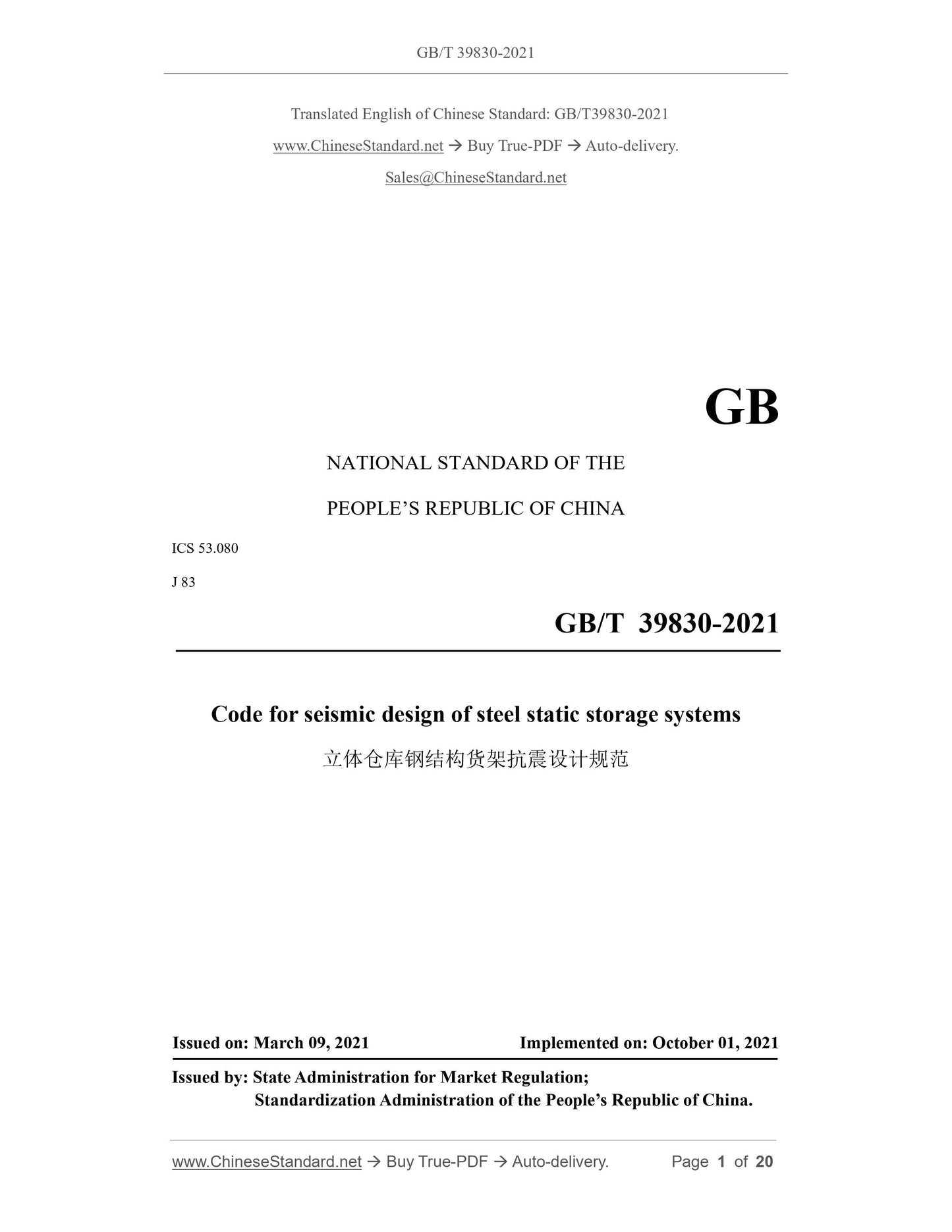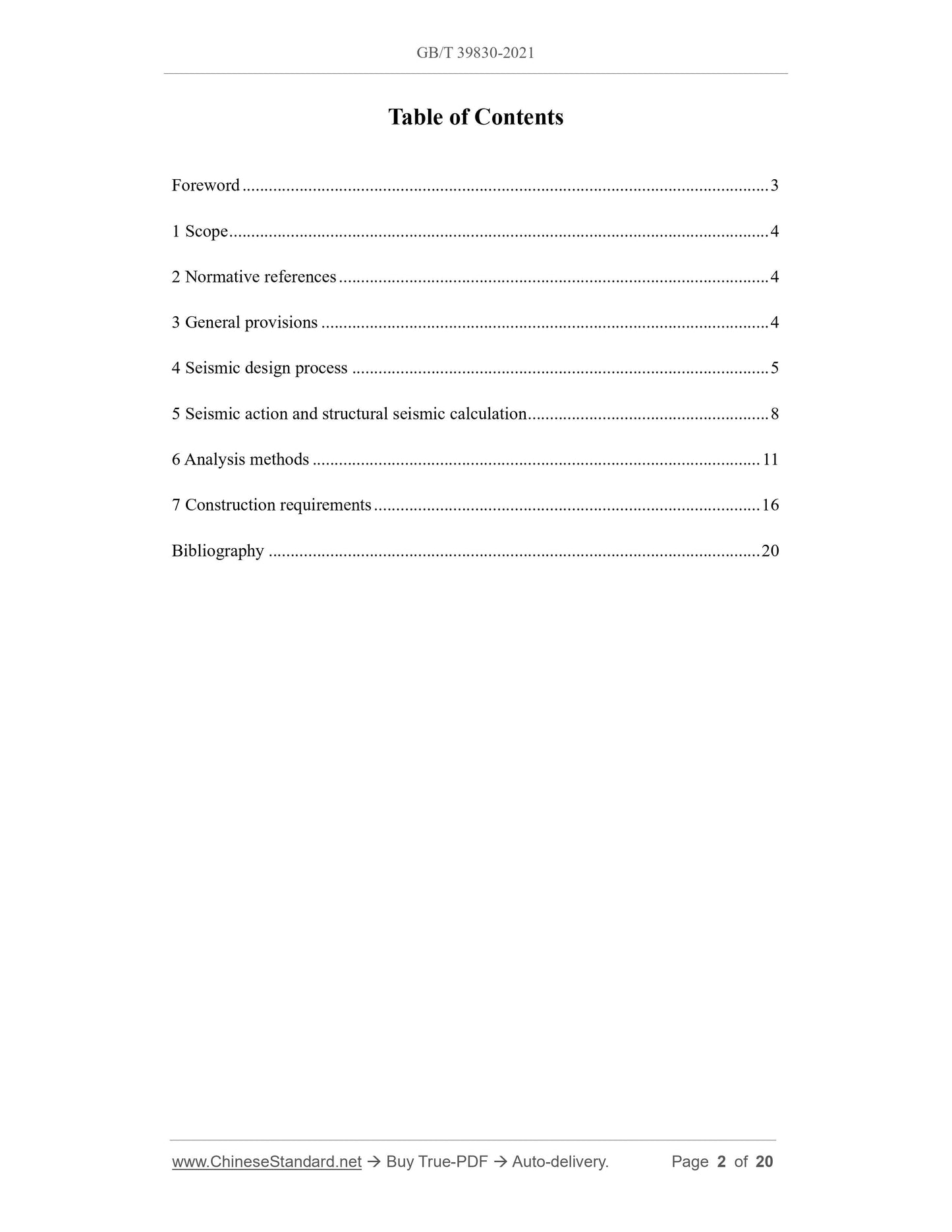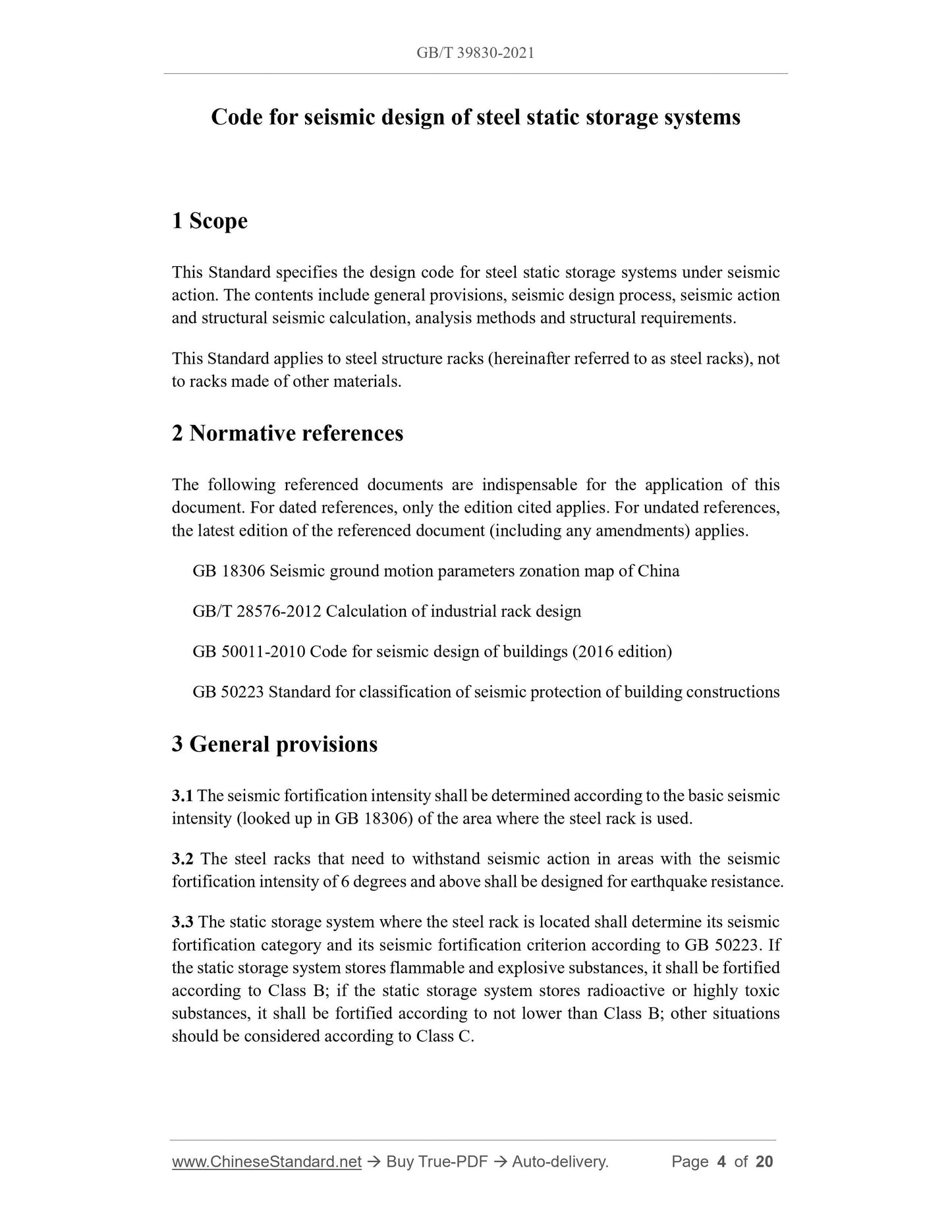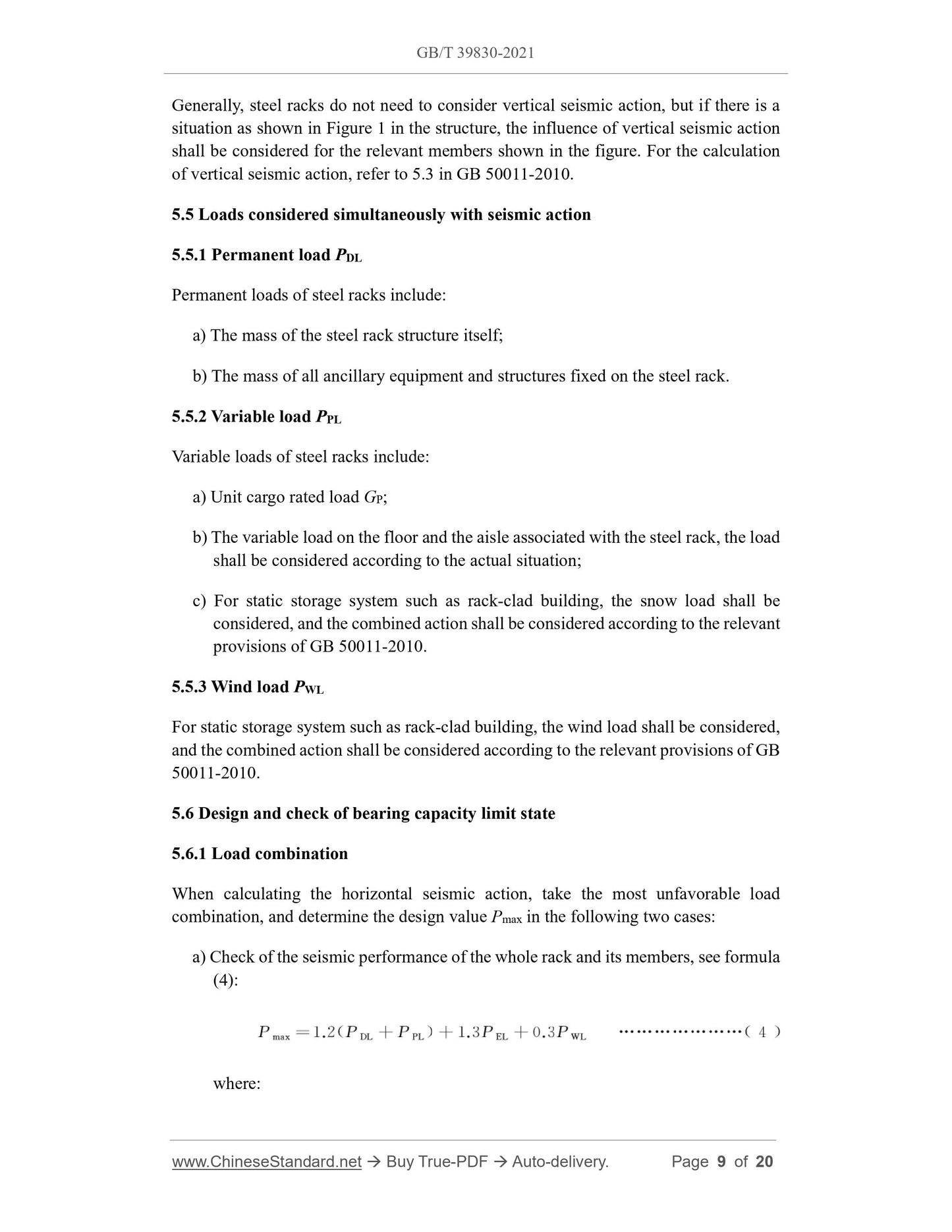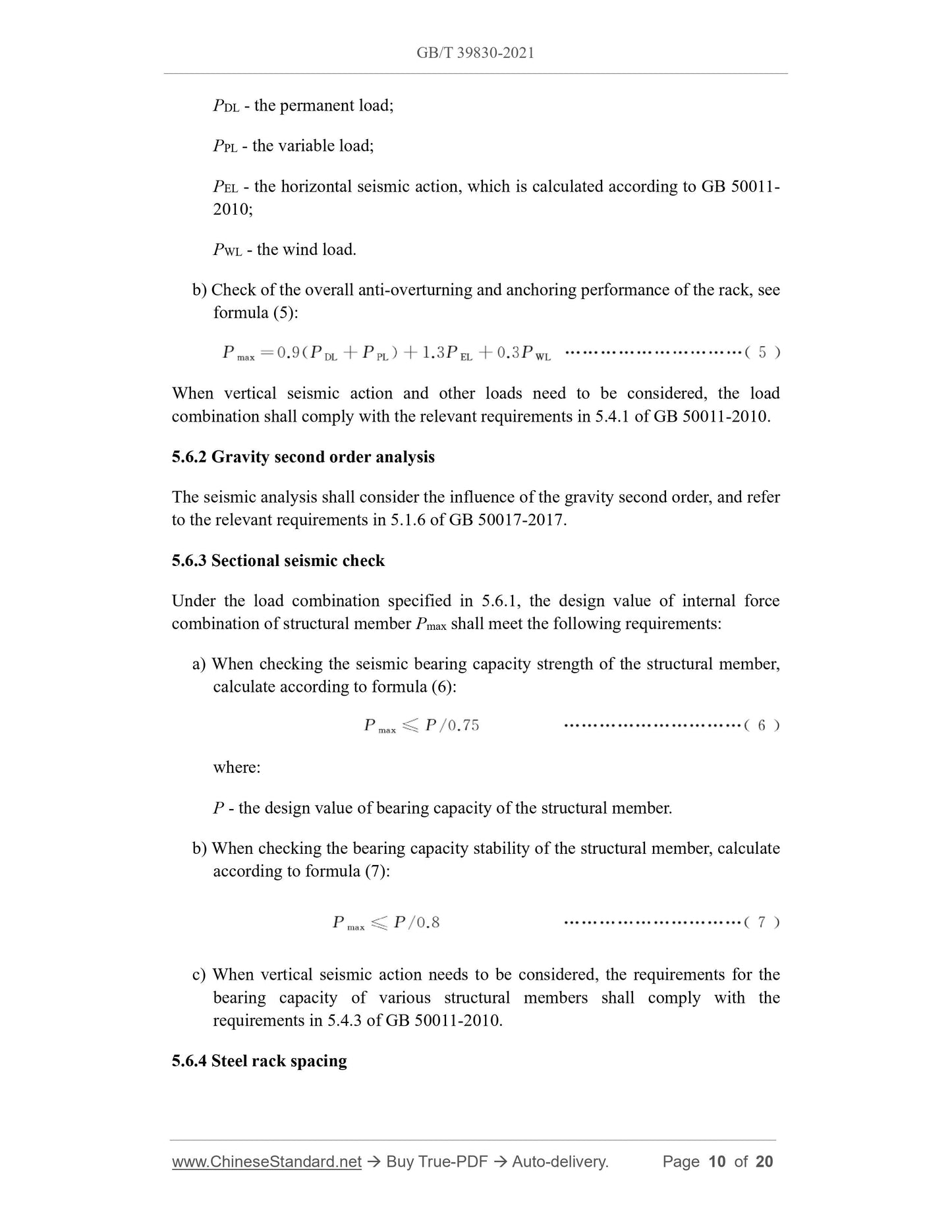1
/
of
6
www.ChineseStandard.us -- Field Test Asia Pte. Ltd.
GB/T 39830-2021 English PDF (GB/T39830-2021)
GB/T 39830-2021 English PDF (GB/T39830-2021)
Regular price
$305.00
Regular price
Sale price
$305.00
Unit price
/
per
Shipping calculated at checkout.
Couldn't load pickup availability
GB/T 39830-2021: Code for seismic design of steel static storage systems
Delivery: 9 seconds. Download (and Email) true-PDF + Invoice.Get Quotation: Click GB/T 39830-2021 (Self-service in 1-minute)
Newer / historical versions: GB/T 39830-2021
Preview True-PDF
Scope
This Standard specifies the design code for steel static storage systems under seismicaction. The contents include general provisions, seismic design process, seismic action
and structural seismic calculation, analysis methods and structural requirements.
This Standard applies to steel structure racks (hereinafter referred to as steel racks), not
to racks made of other materials.
Basic Data
| Standard ID | GB/T 39830-2021 (GB/T39830-2021) |
| Description (Translated English) | Code for seismic design of steel static storage systems |
| Sector / Industry | National Standard (Recommended) |
| Classification of Chinese Standard | J83 |
| Word Count Estimation | 18,110 |
| Issuing agency(ies) | State Administration for Market Regulation, China National Standardization Administration |
Share
